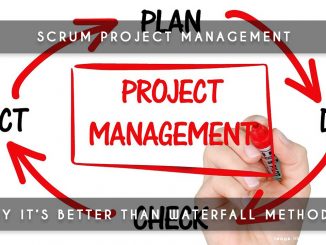
The Agile Manifesto reminds us of an important value of agile methods: individuals and interactions over processes and tools. How can we transform this concretely?
As a reminder, the 4 values of the agile manifesto are:
- Individuals and interactions over processes and tools
- Working software over comprehensive documentation
- Customer collaboration over contract negotiation
- Responding to change over following a plan
We will see in 4 complete articles, how to interpret this values without thinking only of scrum.
Article: Agile manifesto: 4 values and 12 principles
Agile workspaces
We tend to forget it sometimes but the workspace in which each individual spends nearly 8 hours per day must really be a pleasant place. I should do an article on the subject very soon because there are a lot of tips and it is an essential point in a transformation.
Having unlimited coffee, geeky desks filled with personals things, a clean fridge, secluded spaces to call, daylight are some of the things that can really make people feel good about their workplace.
Working in a place that makes us want to come to work each morning increases the productivity of the teams.
Self-organized teams
In agile frameworks, we give serious consideration to the individual and for that we give them importance.
The directive management disappears to give way to leadership management. The teams are self-organizing and the manager will help them get this autonomy. If they lack methods to do, they can call on an agile coach to help them.
Some companies even use certain ideologies of horizontal management such as liberated enterprise or holacracy.
Servant Leader or Facilitator
To help your teams, don’t hesitate to have a manager-type serving leader (who leads the team while doing his best to help) or put a facilitator (dedicated person to help the team). The Scrum has a very close role called the Scrum Master.
You can see the management 3.0 that concretely qualify this new type of management.
Articles: What does a Scrum Master do during his days?
The continuous improvement
Teams must improve day by day; for this, agile frameworks purpose ceremonies that allow individuals to improve together: a real interaction to improve team.
The Scrum purpose to do retrospectives at the end of the sprint while the Crystal Clear purpose to make reflections as soon as there is the need to solve a problem.
Article: Art of retrospective
Very humane practices
I quoted earlier, management 3.0 which is an approach to represent a new type of management; this one purposes very human practices making it possible to fill a certain number of worries that we meet quickly in the companies.
This approach purpose you the good practices to do your best to make the individual feel good within the teams.
Kudo Cards allow for example to add positive interactions between teams; the cruel lack of recognition is filled by the establishment of cards allowing to have recognition between colleagues.
For example, setting up a Mood Board and a Happiness Door also helps to monitor the mood of the team; the servant leader will take advantage of these indicators to try to improve things with concrete actions if necessary.
Article: A mood board to follow the health of the team
Humanize our meetings
Starting a meeting with a small Ice Breaker to break the ice in the team and ending with a ROTI to know how to improve the next meeting are a great way to allow the individual to improve their work environment.
We try to always have a facilitator in meetings to have the dynamic meetings (the scrum master, sprint master for example).
Article: Ice Breaker / Energizer
Too much process kills processes
As this first value of the Agile Manifesto reminds us, let’s stop making processes of everything while they are rarely applicable to the letter. Let’s take the opportunity to make the proposals that the teams can change when needed.
In some large company, documentations presenting some processes are sometimes of great help because we don’t always know where to start but it should not be “engraved in the marble”.
It is quickly depressing for individuals to have to follow inappropriate processes so let them adapt the processes to the needs they have. These will take much more motivation.
Don’t impose the tools anymore
We are quickly obliged to use war tools such as Jira even if we will only use 1% of what the tool purpose us. But Trello in many cases would be sufficient to do the job we expect. These are the rules that some companies impose on all agile teams.
Let the teams use the tools they feel most comfortable with. At management level, it would not be easy to manage and it raises many questions completely legitimate:
- Git is more suitable, why we let one of the teams use SVN?
- Why would a team use Trello while others use Jira?
- How to have indicators companies if everyone uses his own tool?
Indeed, these are totally legitimate questions but the teams should have to align by choosing the best tools for everybody. Let them choose collegially to ensure that these people validate the tools with which they think it is better to work.
In case of error ? No worries, we change tools to improve the work of the team.
Conclusion
Here are a few things that are applicable to respect the first value of the agile manifesto: individuals and interactions over processes and tools.
If you have other ideas because there are probably many more, don’t hesitate to share them with us.




Be the first to comment